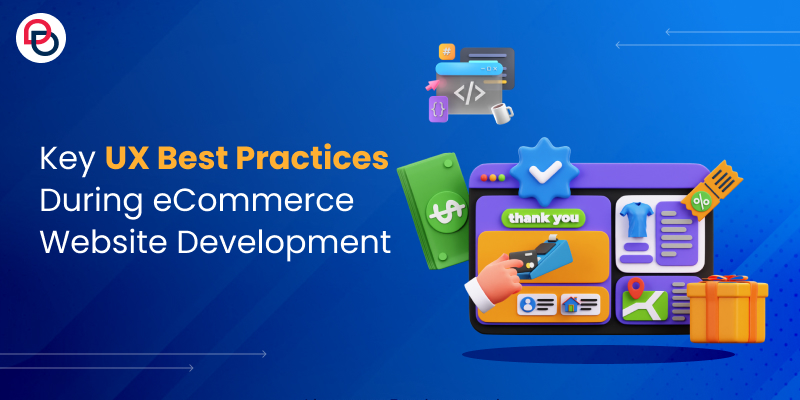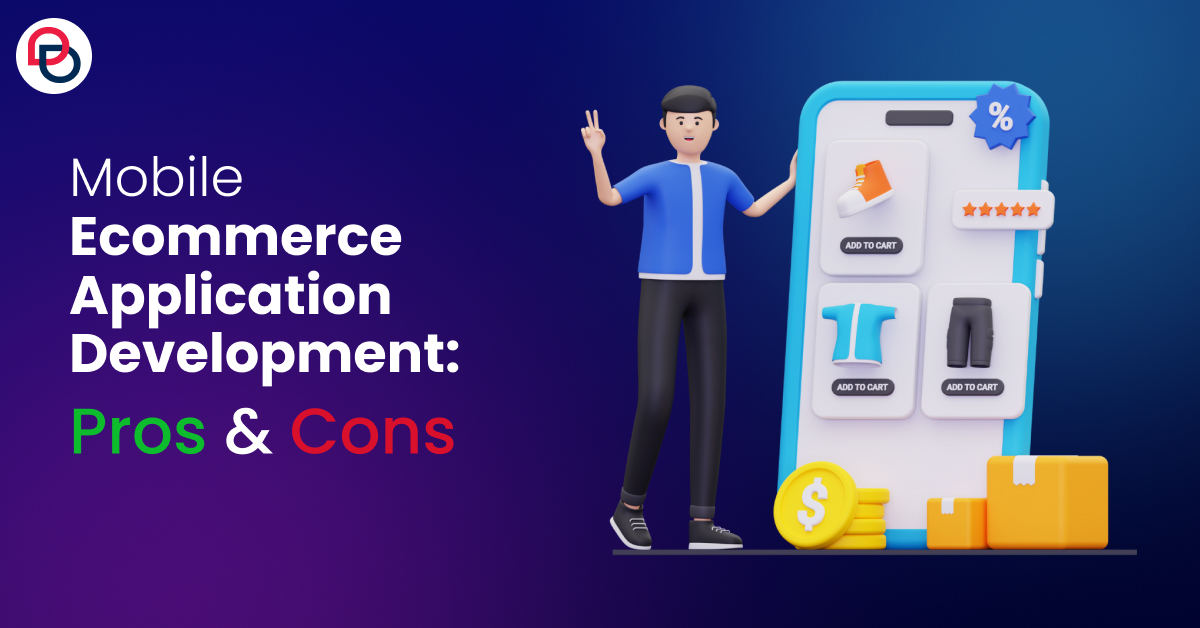Key UX Best Practices During eCommerce Website Development
Your website’s user experience directly affects your conversion rate. When someone visits your online store, they’re not just looking for pretty designs—they want an easy, smooth experience. It’s frustrating for users to land on a website that’s visually appealing but hard to navigate. A beautiful design might catch attention, but if shoppers struggle to find what they need, they won’t stick around long enough to buy anything. The journey from browsing to checkout should feel natural and effortless. When your site’s UX is well-designed, visitors are more likely to complete purchases, leading to higher conversion rates. The easier it is, the faster the sales come in.
Before you opt for eCommerce website development in Dubai, learn what you can expect from providers.
eCommerce UX Blunders to Avoid
A poor user experience on your eCommerce site means potential losses in sales, and there are several missteps that online store owners often take. Probably one of the first mistakes is to present a visitor with too much right from the beginning. Imagine a homepage overloaded with banners and product offers, a number of pop-ups that distract the visitor from what’s most important — there’s simply nothing to click on first, which makes the visitor leave out of frustration.
Another blunder is making the checkout process too long or complicated. When users finally decide to buy, they don’t want to jump through hoops to get to the end. Multiple form fields, account signups, and unclear shipping details can result in abandoned carts. Keep it short, clear, and direct.
Mobile unfriendliness is another common pitfall. Imagine you’re shopping from your phone, and you have to zoom in and out constantly to make sense of the site. That’s a sure way to lose customers. Ensuring your website is optimized for mobile devices is crucial—your site must be fast, responsive, and easy to use across different screen sizes.
As any eCommerce company in Dubai will advise you, not testing the site for usability would be a huge oversight. Regularly checking for issues and fine-tuning the UX will prevent problems that turn users away.
Page-wise UX Best Practices
Homepages
Your homepage is the starting point, so make it clean, easy to navigate, and right to the point. Shoppers should immediately figure out where to go next—whether it’s to browse categories, check out promotions, or search for a product. Avoid overcrowding the page; instead, let the key information shine. Keep navigation simple, and make sure there’s an obvious call to action.
Category Pages
These pages should help users filter down to what they’re really looking for. Make filters intuitive and easy to use, like narrowing down by price, brand, or color. Don’t overwhelm visitors with too many products per page—clear thumbnails, sharp images, and short descriptions make it easier to scan and select. Ensure that each product has a consistent format for descriptions to maintain clarity.
Product Pages
Here’s where decisions happen. High-quality images (zoomable, if possible) and short, to-the-point descriptions that address user concerns will work wonders. Include essential details like dimensions, shipping, and stock availability. Show customer reviews upfront and include a clear and bold “Add to Cart” button that’s impossible to miss.
Checkout Pages
This is the final hurdle—don’t trip your customers up here. Offer guest checkouts to minimize drop-offs. Keep forms short, auto-fill where possible, and make the payment process transparent. If they’ve made it to the checkout, don’t give them reasons to hesitate. Keep it smooth and error-free, and offer multiple payment options for flexibility.
UX Best Practices – What Goes Into eCommerce Website Development
An eCommerce website with a solid UX tends to concentrate on the ways in which users interact with every aspect of the site, and understanding that design isn’t merely about looks – it’s about making things easier. Basically, you need to prioritize customer experience in eCommerce.
Function Should Be Prioritized
No matter how beautiful a site is, you’ll already have lost customers if it does not work the way you want it to. Imagine trying to navigate on an attractive site where the navigation bar keeps freezing, or where ‘Add to Cart’ doesn’t work instantly.
Frustration grows, and before you know it, the customer is gone, probably never to return. A site designed with functionality as a top priority will just work well- from brisk transitions between pages to smooth transitions at checkout.
User Journey Should Be Simple and Frictionless
Your website should be a helpful guide, guiding visitors gently from point A to point B without requiring them to work it out. The journey from homepage to checkout should not be a game of guesswork.
Let’s say someone is on the lookout for outdoor furniture—they should find the right section easily, browse options quickly, and get to checkout with minimal clicks. Too many distractions like unrelated banners or unnecessary links can send them off track. Think of every step as a chapter in a story; if the flow is clear, the user is more likely to stay engaged.
Website Load Time
There is no getting around it – users expect sites to load fast. According to experienced eCommerce solution providers, having a website that lags is one of the quickest ways of losing potential buyers. Research has shown that an even second’s loading delay in a webpage can dramatically decrease conversions.
Speed up your site by compressing images, using a content delivery network (CDN), and removing unnecessary plugins. When your site responds quickly, it keeps people engaged and on the path to buying.
User-Focused Copy
What your site says is as important as how it looks. Long, drawn-out descriptions packed with jargon don’t resonate with most shoppers. Instead, focus on clear, concise language that answers customer questions immediately. If someone’s looking at a product, they don’t need to read a novel—they just need to know the essentials: what it does, why it’s useful, and how they can get it.
Sticky Search Bars
A sticky search bar makes browsing through large eCommerce sites a breeze. It follows the user down the page so they can find a new product without having to scroll all the way back up to the top.
Imagine you are on a product page where you are half way through the page and suddenly you want to go look something else up, the last thing you would want to do is search for the search bar. Keeping it accessible improves the flow and helps users find what they need faster.
Visual Hierarchy
What is the first thing that users are going to see? That is what a visual hierarchy controls. Through size, contrast, and color manipulation of various elements, you can divert attention to where it matters the most.
So, the ‘Buy Now’ button should be much more conspicuous than a small text link in the footer. A user’s eye is naturally drawn to larger, bolder items, so make sure what’s most important is also the most visible.
Mobile Friendliness
More shoppers are using their phones to browse and buy, so it’s no longer optional to have a mobile-friendly site—it’s mandatory. When someone visits your site on a phone, the layout needs to adapt, the text should be legible, and the buttons should be easy to tap.
A clunky, unresponsive mobile site is an instant turn-off. Users expect smooth navigation, whether they’re on desktop or mobile, and if your mobile site isn’t cutting it, users will leave without making a purchase.
Navigation Menus
Think of your navigation menu as a map. If it’s unclear or overcomplicated, your users are going to feel lost. A clean, organized menu that provides easy access to main product categories and important pages (like FAQs or contact details) is a small but critical UX detail. Dropdowns, sticky menus, and even icons help users quickly locate what they’re searching for.
Continuously Test and Optimize the Website
A static website is a thing of the past. Regularly testing your site for performance issues, broken links, and user behavior is the key to keeping things smooth. A/B testing different layouts or designs can reveal what resonates with your audience. Don’t let your site become stale; evolve based on user feedback and metrics.
If you need eCommerce website development in Dubai, providers can create a well-designed store to boost your sales and revenue.
The Role of Microinteractions in E-commerce Website Development
A well-timed microinteraction can make all the difference in how a user feels when navigating your eCommerce site. Take something as simple as a visual cue when hovering over a product image. It is just this slight shift, maybe the image expands slightly, or some details appear in advance to reassure the shopper that he is on the right track. A small detail, yet serves to cut down hesitation.
A loading spinner next to a message such as “Processing your payment” at check out can help ease fear: without it, a user may wonder whether the process is stuck or worse, failed. Such momentary feedback clarifies and defuses frustration.
Then there’s the satisfaction of completing an action. For instance, when shoppers put something into the cart and the item “flies” into the shopping cart icon, confirming that the action was successful. It’s such a fleeting small moment but it reassures the shopper and really makes the experience smooth. These seemingly minute touches guide users easily through your site, making the journey much more intuitive and engaging. They might not even notice those details at first glance, but they would certainly feel something was off if it were missing.
Desktop eCommerce vs Mobile eCommerce
Those who seek eCommerce website development in Dubai, must realize that though mobile traffic dominates but desktop purchases often result in higher average order values
Why? This is because desktop users typically have more time to explore, compare products, and make more thoughtful decisions. With mobile, convenience rules everything. Shoppers may browse quickly or make impulse buys but frequently abandon their carts simply because the process is a bit of a chore on smaller screens.
Desktop websites are much more spread out, and have clearer imagery and an altogether more relaxed shopping experience. The secret here is to ensure that both your desktop and mobile sites are optimized for their audiences, creating smooth, tailored experiences that reduce friction.
To Sum Up
A seamless UX should not be noticed at all. If it is not too much work for the shopper to navigate through the store, add items to their cart, or check out in a way that just makes sense, so will a great user experience.
It’s when users don’t encounter roadblocks that they remember your store positively. They won’t be able to pinpoint what exactly made their journey so smooth—they’ll just feel it was easy. Great UX fades into the background, working quietly to deliver an intuitive, enjoyable shopping experience that leaves customers satisfied and ready to come back for more.
For top-notch eCommerce website development in Dubai, you can consult with our experienced developers at Brainium.




